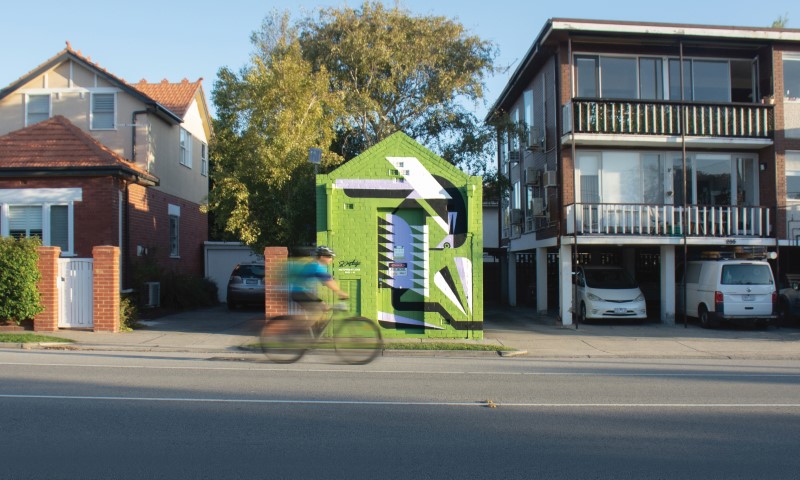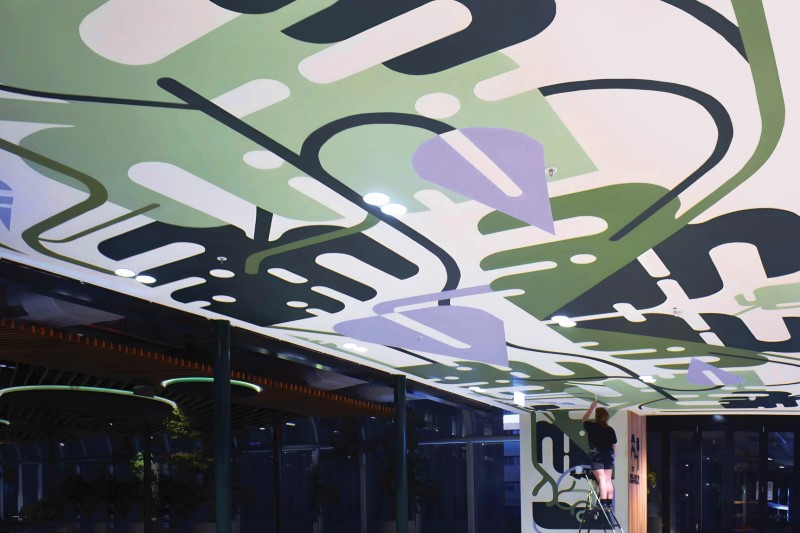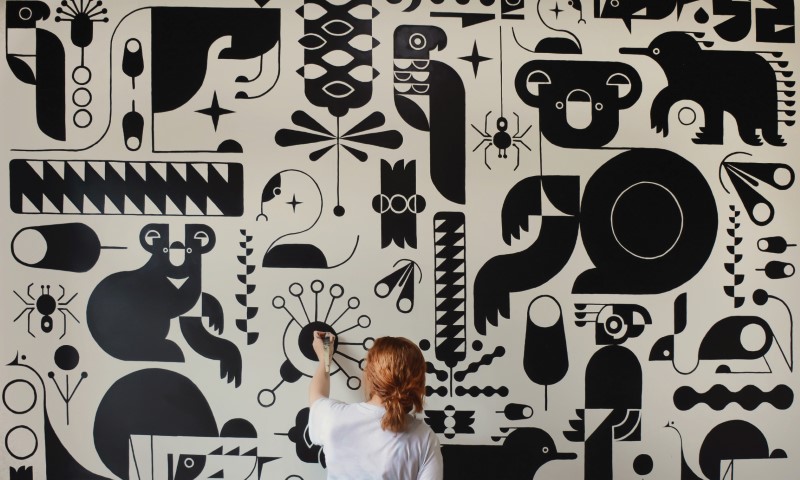How would you describe what you do to someone who hasn’t seen your art?
A defining characteristic of my style is the harmonious interplay of vivid colours and understated, earthy tones – a deliberate reflection of the dynamic contrasts found in the environments I depict. My work primarily takes the shape of large-scale murals in public spaces, and I also create digital illustrations and smaller artworks for exhibitions.
When were you first drawn to your art form?
In 2018 when I painted my first mural. I aim to connect artworks to their specific locations by capturing the flora, fauna and identities of the areas. As I believe art should be seen everywhere rather than confined within the walls of a gallery, I work to break down the barriers between art and public life.
Did you study fine arts, and has it shaped your work?
I studied graphic design at university. I then worked in the field for several years. During this time, it laid the foundation of my creative process, lending a distinctive character to my work.
What draws you to your subject matter?
My primary subject matter revolves around the depiction of nature, emphasising critical environmental issues. Having grown up in the bush and given my travel experiences, particularly around Australia, I use my art to foster a deep appreciation for nature that advocates for its protection.
What’s something people may not know about what it’s like to work with the materials you use?
One aspect that people may not fully realise is the adaptability required when working on public art. While the materials themselves remain consistent, the surfaces I paint on vary considerably. Having previously painted on a ceiling, old brick and corrugated iron, problem-solving skills are crucial when faced with different surfaces.
Is there anything you’re currently working on?
I’m creating a series of canvas pieces inspired by my recent travels to the Kimberley. Additionally, I’m in the planning stages of my very first solo exhibition, Conservation Status, which will have a specific focus on a handful of threatened animals in Victoria. These projects provide perfect platforms to convey important messages and provoke meaningful discussions to a broader audience.
Do you involve the community while painting murals?
I recently travelled to Broome to paint a community mural. Through this process, community members actively participated in the painting of my design. The intention of the mural was for it to be a talking point, to educate the public of the importance of the migratory shore birds in Roebuck Bay.
Above: Artist Stephanie Cartledge in front of Zanda Funerea. Courtesy: the artist.

Acrylic on corrugated iron, 1,100 x 360cm. Courtesy: the artists.




